
We’re passionate about this Region. It’s unique, diverse and it’s growing.
At a time when there’s a spotlight on New Zealand’s local infrastructure, we are committed to the ongoing maintenance and renewal of our core assets such as stopbanks, bulk water pipes, trains and railway stations.
He rohe taurikura – nui te ora o te taiao, he hapori kotahi, he manawaroa te āpōpō
An extraordinary region – Thriving environment, connected communities, resilient future
Whiriwhiri kōrerotia mai | Consultation – have your say
All Councils create long term plans and review them every three years. A Long Term Plan sets out our plans and budget for the next ten years.
At Greater Wellington we look after $2.2 billion worth of diverse assets, ranging from stopbanks and parks to bus shelters and bridges. In the next 10 years, we will spend $0.7 billion replacing assets that are reaching the end of their life and $1.0 billion to improve or provide additional assets. We are forecast to spend $7.5 billion running the public transport network, providing bulk water, flood protection and looking after the Region's environment.
In this consultation, we explain our proposals and ask for your feedback on two key topics.
We describe the impact of our proposals on rates, borrowing and levels of service. The first topic is Ownership of Public Transport Assets; the second topic is about buying shares in CentrePort.

Here are the topics we want your feedback on:
If you'd prefer to download this information, we have a PDF available for you:
Long Term Plan Consultation I Hei Whiriwhiri I Te Pae 2024-34


date_range Published 18 Mar 2024
Download now (PDF 16 MB) get_appHe karere na te Heamana me Te Tumu Whakarae | A message from Chair & CE
Greater Wellington’s vision for an extraordinary region, with a thriving environment, connected communities and a resilient future remains strong.
Helping us to deliver on our vision, are four cross-cutting focus areas that guide the decisions over the next three years:
- Environment - Holistic approaches to deliver improved outcomes for te taiao
- Climate Change - Leading action for climate resilience and emissions reduction
- Partnerships - Active mana whenua partnerships and participation for improved outcomes for Māori
- Equitable Access - Improved access to services and equity of outcomes through participation with communities
We are committed to an active partnership with mana whenua - Ngā Hapū o Ōtaki, Ātiawa ki Whakarongotai, Ngāti Toa Rangatira, Taranaki Whānui ki te Ūpoko o te Ika, Rangitāne ō Wairarapa and Ngāti Kahungunu ki Wairarapa. Our partnership recognises and supports mana whenua as kaitiaki (guardians) of their broad whenua, freshwater and moana interests in their ancestral lands. We continue to work with our mana whenua partners in new ways by collaborating at all levels of our organisation including governance, management, and operations.
Like all councils in Aotearoa New Zealand, we’re developing our 2024-34 Long Term Plan under difficult circumstances. We have experienced increased costs, rising inflation, higher insurance and borrowing costs. Unfortunately, extreme weather events are becoming more common. All of this creates a challenging situation that we must manage carefully to get things done.
We’re also facing concern about our railway tracks. Without significantly increased investment to maintain the network, we face the likelihood of further disruption, delays and reduced service levels. To keep our rail services running as they should be, we’re working with KiwiRail, the NZ Transport Agency and Ministry of Transport on this issue.
We have worked hard this year to improve the reliability of our buses. Now top of our to do list is a future-proofed public transport network and doing the groundwork to be well prepared for extreme weather events now and in the future.
The big issues of flood prevention, maintaining bulk water supply and public transport demand a region-wide approach.
We are committed to continuing to deliver our core services well. In some instances, we’re increasing our investment to make improvements.
Our goal to be carbon neutral by 2030 is unchanged. We will continue to reduce and offset our greenhouse gas emissions through this Long Term Plan, with the aim to be climate positive by 2035.*
We’ll do this with our mana whenua partners, communities, Wellington, Porirua, Wairarapa, Kāpiti Coast and the Hutt Valley councils and our team of public transport specialists, planners, engineers, environmental regulators and advisors, scientists, park and river rangers.
Our approach is careful and considered to ensure the best possible investment, and to prevent future generations being burdened with debt and a big clean up job. Please have your say to help us make decisions on the topics outlined in this consultation document.

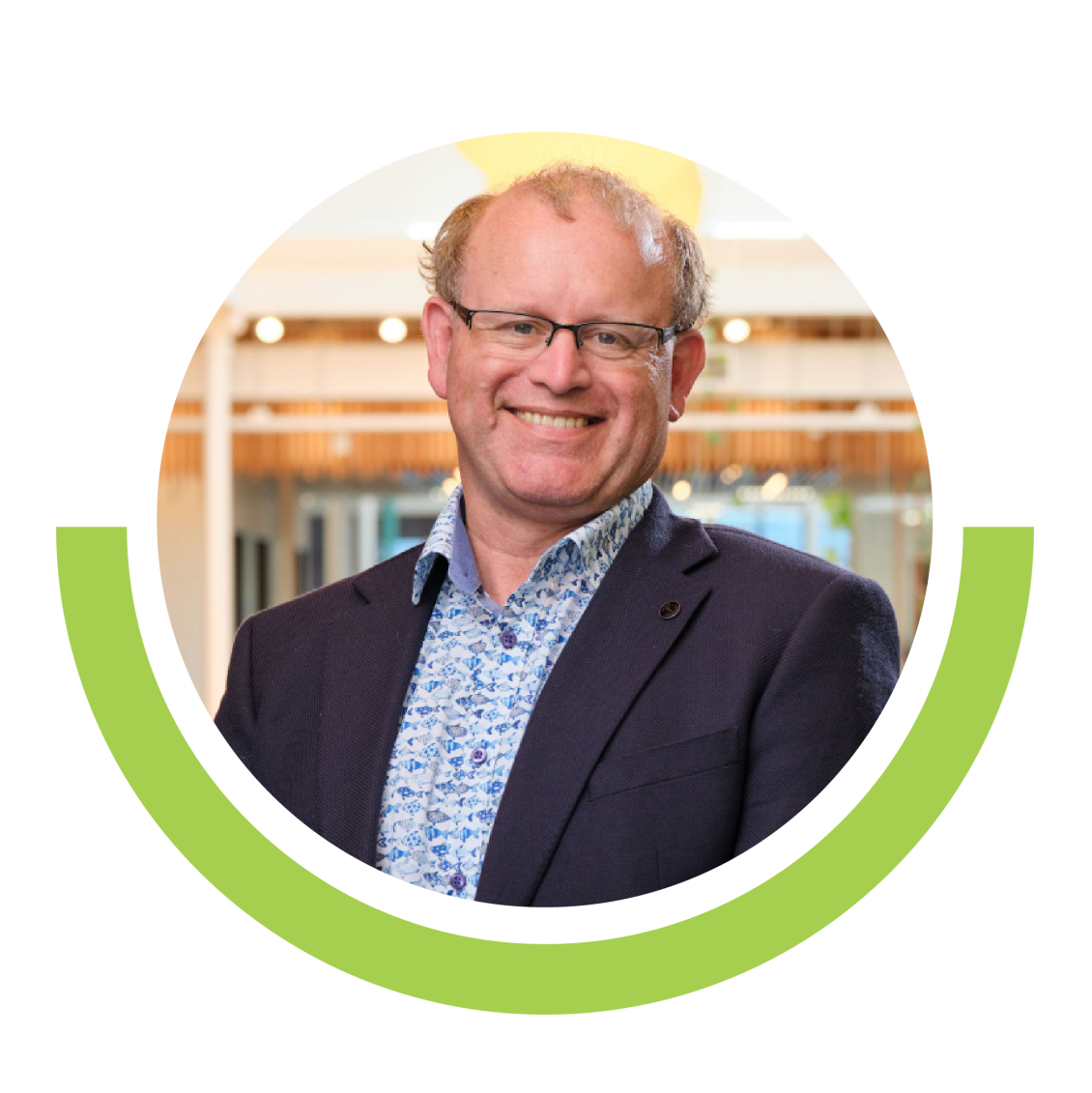


Consultation topic 1 – Increasing Greater Wellington’s control of strategic public transport assets
We think more control is the best route to take
Many thousands of people rely on our public transport system to connect them across the Region and demand is increasing. We’re working to provide public transport services the community can have confidence in and are proud of: a reliable, accessible, low-carbon public transport network.
We have limited control over key infrastructure
The challenge we face is our limited control over the key infrastructure needed to deliver public transport. Being in control of assets, like bus depots and electric bus charging stations, would make it easier for us to plan. These assets are currently owned by private operators, who are contracted by us to deliver services
We can take a more long-term view
If we increase the Council’s control of public transport assets, we can take a more long-term view on the planning and continuity of bus services across the whole Region.
The availability of inner-city land and electricity supply is becoming increasingly challenging. Control over these would help us achieve our goal of decarbonising the bus fleet. Our proposed increased control will also ensure new bus operators are able to compete more fairly, and equitably, for future service contracts.
Bus depots are the first step
Greater Wellington has approved, subject to public consultation, a draft Public Transport Asset Control Strategy that would see our control of key public transport bus assets increase over the long term.
The first proposed step in this strategy is the development of bus depots in Lyall Bay and Northern Wellington. We’re also talking with Wellington City Council about future arrangements for the Lambton Interchange, which is a vital public transport hub. The depot in Lyall Bay would replace the existing privately-owned Kilbirnie bus depot, whose future is uncertain. There would be another depot in Northern Wellington because we currently don’t have long-term right of use over the privately-owned depot that services this area.
 The benefits
The benefits
Increasing our control of bus depots, charging infrastructure, and possibly buses, will have benefits. The most important are that strategic infrastructure is available for our bus passengers to use in the future, and decarbonisation of our bus fleet can be achieved.
The costs
Our plan is intended to be cost neutral, or better, over the long term. This is because investment in depots is already funded by us, either directly or through the fees and charges paid to private operators.
Some upfront investment will be necessary in developing and securing depots and charging infrastructure. We’ll also need to find the expertise to manage the depot and infrastructure investment. We have budgeted for $357 million out of a total Metlink capital budget of $731 million which will be funded by debt (excluding bus ownership).
NZ Transport Agency has already confirmed $10.8 million of funding is available if we go ahead with Lyall Bay electrified bus depot development. The likely costs of new arrangements for the Lambton Interchange are uncertain but we believe they will be within our planned budget.
In summary
Why do this?
- This option offers long-term security of strategic assets
- Increased control of decarbonisation programme
- Increased ability of operators to enter the market
- Cost neutral over the long term
Why not do this?
- The upfront funding required for depot development
- Finding the expertise to manage the depot and infrastructure investment
This consultation has now closed. The updated Long Term Plan will be published in July.
Consultation topic 2 – Buying shares to become a 100% shareholder of CentrePort
CentrePort is a strategic asset for the region. It provides a full range of port services, including imported goods and exports by container, bulk trade (such as logs, vehicles and cement), and fuel imports. It also provides the northern hub for the Cook Strait ferry service. In 2022/23 it generated revenue of $99 million and a profit of $12 million before tax.
The services provided by CentrePort support businesses across the Region and into Taranaki, Manawatu and Marlborough. The Cook Strait ferry service is a nationally important link between the North Island and South Island. Over 137,136 passengers from 89 cruise ships were welcomed to Wellington harbour during the 2022/2023 season. CentrePort also has a critical role as a lifeline asset during an emergency, such as an earthquake – providing an essential service to import food, water, fuel, equipment, first responders and evacuation of people.
What’s the decision?
Currently, we own 76.92% of CentrePort, with the remaining 23.08% owned by Horizons Regional Council.
Horizons are considering selling their shareholding and have approached us to purchase their shares. Purchasing these shares would enable us to be a 100% shareholder of CentrePort.
 Benefits of ownership
Benefits of ownership
As a majority shareholder we can currently control major decisions. A key advantage of becoming a 100% owner of CentrePort is that we would be able to determine the port’s future direction more easily. We can consider how Centreport can work with other partners, including options in the future to bring in other strategic investors to grow the business and increase the role of CentrePort in the national supply chain.
Not purchasing the shares represents a potential risk, as they could be purchased by an investor who isn’t strategically aligned to us. If they were sold through a share market offering, this would also result in a dilution of the current full public ownership of CentrePort.
Risks of ownership
The port sector is still subject to considerable uncertainty following the impact of COVID-19 on supply chains and tourism. There are also the challenges of both domestic and international economic conditions.
There is risk in the cost and delivery of the Regeneration Plan at CentrePort following the Kaikōura earthquake. There is uncertainty associated with the Interislander ferry terminal. These risks are currently shared to an extent with Horizons and would become our responsibility alone.
Increasing the shareholding will also increase our organisational carbon footprint. In 2022/23 a 100% shareholding would have added 770 tonnes or 2.3% of CO2 to our total emissions. Our financial exposure to climate impacts is also slightly increased.
Purchasing the shares
To purchase the shares, we would need to borrow funds. We would benefit from an increased shareholder dividend*, but there would be additional costs for ratepayers. These costs depend on the purchase price agreed with Horizons Regional Council, which is not yet agreed. We estimate the impact of purchasing the shares would be an increase of up to 1.2% average region-wide rates per annum. This would mean an increase in our overall borrowing requirement, but we would still be well within our agreed borrowing limits, and this would not affect our excellent Standard and Poor’s financial rating of AA+.
This would mean an increase in our overall borrowing requirement, but we would still be well within our agreed borrowing. It would not affect our Standard and Poor’s financial rating of AA+ with a negative outlook.**
*In the 2022/23 financial year CentrePort paid out a $6m dividend and expect this to grow 6% per year over the long term.
**At the same time as issuing the Greater Wellington’s long-term credit rating, Standard and Poor’s unusually and importantly also released a report on the weakening of the Local Government Institutional Framework. This environment change had a significant influence on the negative outlook attached to our rating but has no impact on our ability to raise debt nor does it have an impact on our access to best rates with the Local Government Funding Agency.
This consultation has now closed. The updated Long Term Plan will be published in July.
Ētahi atu taipitopito kōrero | Other things you need to know
This consultation has now closed. The updated Long Term Plan will be published in July.
He aha ā matou whiriwhiringa me te putea tautoko | What we consider and how we fund it
The rates you pay contribute to the services we provide. We also fund our work through a range of sources, like central government funding, grants, income from bus and rail services and our current shareholding in CentrePort.
The above graph provides an average figure for each source of funding over the next 10 years.
Forecast rates increases 2024-34
Since our 2021-31 Long Term Plan, we have seen inflation and interest rates reach levels no one anticipated. Cyclone Gabrielle has had insurers rethinking their charges and we have seen double-digit increases in our insurance premiums. Unfortunately, there’s no sign of increases slowing down in the short-term. This has put significant pressure on the first year of our 2024-34 Long Term Plan.
Rising inflation and insurance have also affected our public transport operators. These costs, along with driver wage increases (to remedy the shortage of drivers), have added to operating costs.
These factors are casting doubt over the future, so we provide ratepayers with certainty regarding rates over the 10-year period. We have set the following rate limits:
- Average regional rates per ratepayer increase will be limited to $200 per annum
- Total average rates revenue will comprise of approximately 39 percent of the Council’s revenue requirements over the ten-year period.
We are investing in flood protection through the RiverLink project ($166m) and increasing maintenance of the rest of our flood protection network by 50%. This work ramps up in the first two years of the Long Term Plan and helps to keep our communities safe from significant weather events.
Financial forecasts are predictable in the short-term, (1-3 years). Project costs and economic factors are uncertain over out years. We have based our forecast on the best information available right now.
Financial Assumptions 2024-34
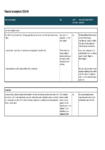

date_range Published 14 Mar 2024
Download now (PDF 220 KB) get_appDebt levels and explanation
We use debt to spread the cost of projects which have intergenerational benefits between current and future ratepayers. A portion of your rates is allocated to interest and principal repayments to fund this debt.
For example, if the lifespan of a stopbank beside a river is 100 years, using debt to pay for it means the ratepayers’ investment is spread more fairly across the life of the stopbank and to those who benefit from the flood protection it offers.
Balanced Budget
Greater Wellington is planning to have a balanced budget throughout the 2024-34 Long Term Plan as required in section 100 of the Local Government Act. The balanced budget ensures that there is revenue to cover the operating expenses.
This graph shows the ratio of our Operating Revenue, divided by our Operating Expenditure.
What we do, and what we have planned
Plans and priorities to get things done
Our environment is our big backyard – the air we breathe, the water we drink, the places we swim, walk and fish.
So, it is vital it is regulated, monitored and protected for us to enjoy now, and for generations to follow.
We’re responsible for environment management, flood protection and land management, provision of regional parks, public transport planning and funding, and metropolitan water supply.
We group the activities we deliver into four ‘Activity Groups’ for planning and managing the things we need to achieve:
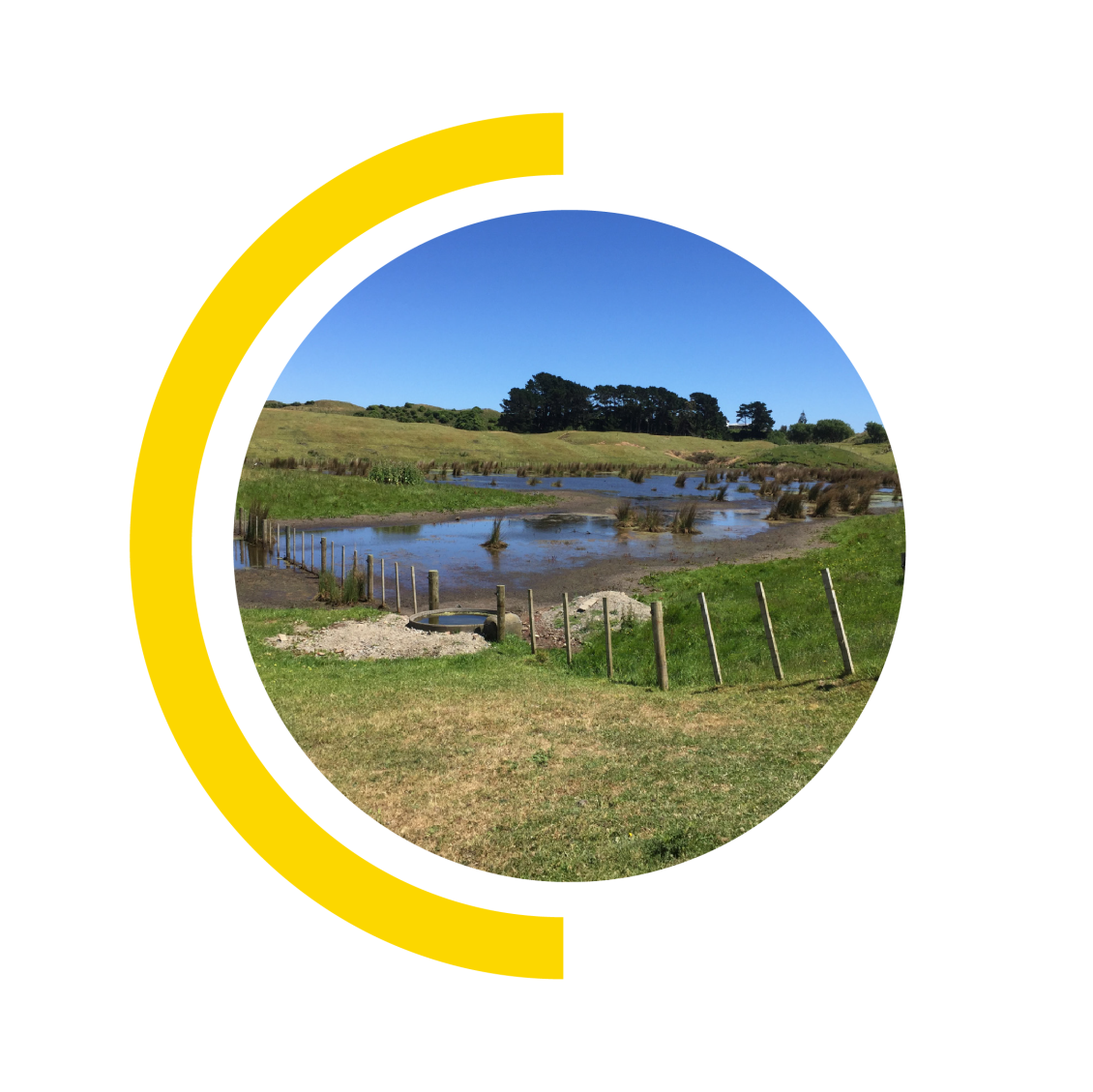
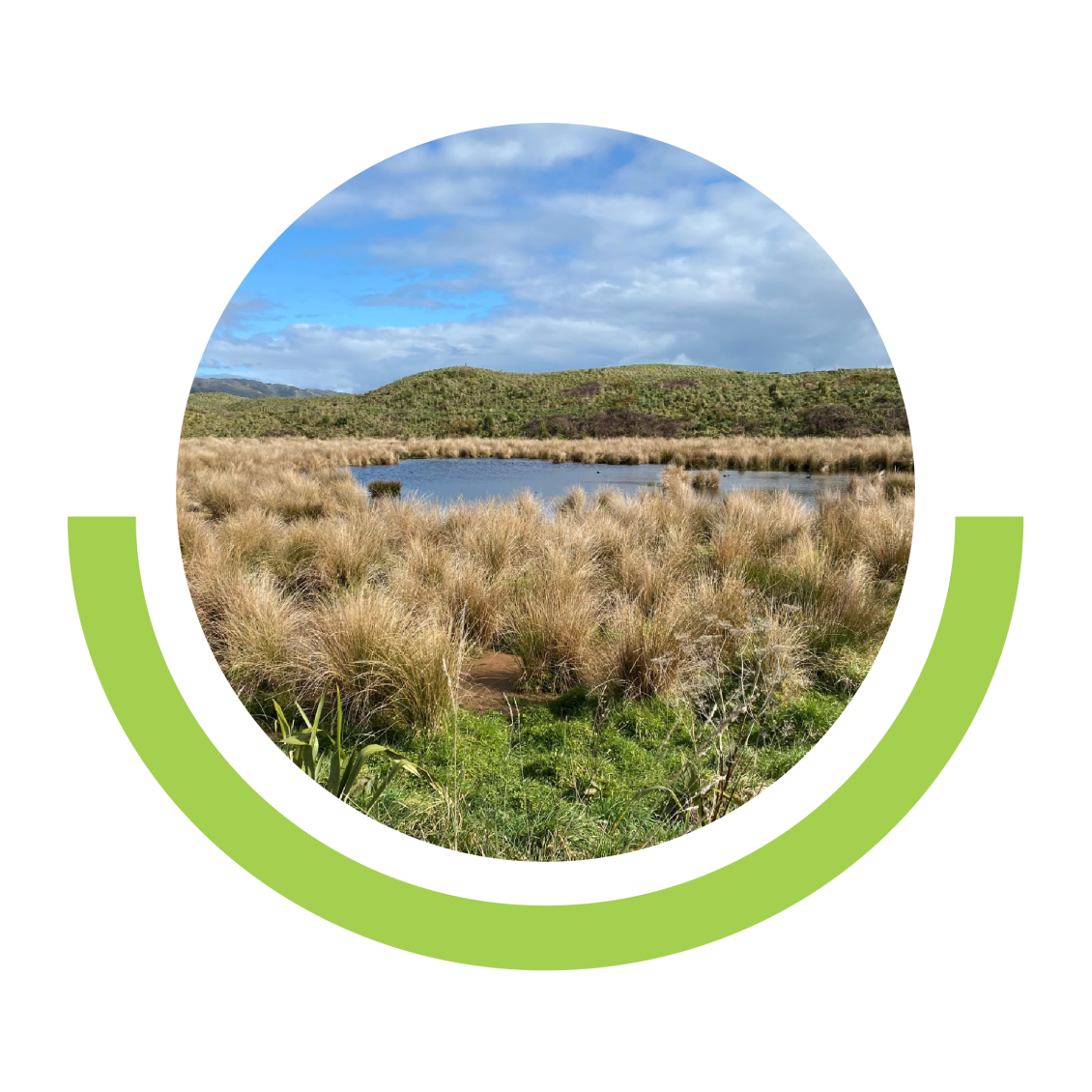
Key activities
Key pieces of infrastructure investment over the next 30 years
We are taking a long-term view to make sure our infrastructure will provide the levels of service our communities need.
We’ve considered a range of factors as we’ve planned for our infrastructure needs over the next 30 years. It is important that our communities are aware of the challenges for our infrastructure, and the likely future cost.
We are planning for an additional 164,000 residents over the next 30 years.
Treasury is forecasting the economic slowdown will continue this year and the slowing down of the labour market is likely to result in a rise in unemployment. The overall cost increases for communities and the associated equity challenges are expected to continue.
From 2026, interest rates are expected to fall and growth is expected to pick up, averaging 2.8% per year and unemployment is expected to trend downward.
The Region will continue to experience more frequent and intense rainfall events, and more frequent droughts. The number of hot days will increase, and the number of frosts will decrease. There will be permanent sea level rise and more frequent and intense coastal flooding and erosion. Inland, we will see more intense river flooding, and increased slips and landslides. The annual average temperature will also rise. We are at risk of earthquakes, tsunami and, increasingly, wildfires – all posing threats to life, property and livelihoods.
We have made plans with these significant challenges in mind
We look after $2.2 billion worth of diverse assets, ranging from stop banks and parks to bus shelters and bridges. In the next 10 years, we will spend $0.7 billion replacing assets that are reaching the end of their life and $1 billion to improve or provide additional assets.
We are forecast to spend $7.5 billion running the public transport network, providing bulk water, flood protection and looking after the Region’s environment over the next 10 years.
Key infrastructure projects over the next 30 years
| When we’re doing it | Infrastructure works we’re doing |
Approved cost 2021-31 |
How much it will cost 2024-34 |
|---|---|---|---|
| 2024-2033 | Recloaking Papatūānuku: plant 700 ha of previously grazed land at Belmont Regional Park* | $830K | $29.3m (Opex) (upscaled) |
| 2024-2028 | Public Transport central business district layover | N/A | $23.58m |
| 2024-2033 | RiverLink - Te Wai Takamori o Te Awa Kairangi (Flood Resilience)* Associated Land purchase (PT) |
$76.5m (excluding land purchase)** |
$166.3m $2m |
| 2024-2054 |
Hutt Wellington Capex (Flood Assets)
|
$223m | $213.3m |
| 2024-2054 | Kapiti Capex (Flood Assets) | $20.8m | $31.6m |
| 2024-2054 |
Lower Wairarapa Valley Capex (Flood Assets)
|
$220.1m | $131.2m |
| 2024-2054 |
Waiohine Capex (Flood Assets)
|
$13.9m | $5.9m |
| 2024-2054 |
Te Kauru (Flood Assets)
|
$12.6m | $65.0m |
| 2024-2054 |
Other Wairarapa (Flood Assets)
|
$1.5m | $12.5m |
| 2024-2033 |
Water Supply resilience to natural hazards and climate change |
$38.7m | $64.7m |
|
2024-2031 2024-2027 |
Johnsonville Transport Hub Porirua Interchange |
N/A N/A |
$13.3m $7m |
| 2024-2029 |
Public Transport Lower North Island Rail - Rolling Stock and network improvements Wellington/Masterton and Wellington/Palmerston North* |
$745m (includes 90% central government funding) | $568m (includes 90% central government funding) |
| 2024-2032 |
Rail - Metro Rolling Stock fleet expansion and depot extension to meet growth in demand* |
$191m | $217m |
| 2024-2033 | Sustainable water supply (Te Mana o te Wai) – including design and consenting of two additional water storage lakes at Pakuratahi. Construction and operating cost estimates will be detailed in future Long Term Plans. | N/A | $35.5m |
| 2024-2033 | Existing Water Supply network renewal | $275m | $424m |
| 2024-2026 | Harbours Channel Risk Review implementation | N/A | $558k |
| 2024-2025 | Public Transport National Ticketing Solution – Implementation* | $48.4m | $47.6m |
| 2024-2025 | Public Transport Real Time Information 2.0: Replacement of Real Time Information infrastructure | $19m | $2.9m Capex |
| 2024-2035 | Public Transport Buses Replace Trains | N/A | $10m |
(* denotes previously approved in past LTPs with revised budget shown). The following are excluded: Corporate Support (Fleet and ICT costs), Regional Strategy and Partnerships (Transport Analytics, Stadium Trust- seismic improvements, and Regional Land Transport Strategy and Planning)
(**The original RiverLink budgets excluded additional property purchase, were based on an initial design phase and on estimates undertaken in 2018. Estimates were updated across the project by independent estimators in 2021 and again in 2022 to arrive at an updated estimate.)
Note: The delivery of the public transport projects outlined depends on Central Government funding which is uncertain.
Forecasting to invest in our future
Total projected expenditure, $9.2b
We expect to spend $1.75 billion on renewals and new capital between 2024/25 and 2033/34. This will maintain our levels of service to you, meet priorities and address challenges. The projections consider what we expect to happen across the Region in the next 10 years. We don’t know all the future costs, so solutions will be developed and costed as part of our annual planning.
Environment $709m
Metlink $1,041m
Water Supply $7,276m
Proposed rates changes
Average rates increases across the region: 19.8%
| Average change per annum | Average change per week | |
|---|---|---|
| Residential incl. gst | $185.56 | $3.57 |
| Business excl. gst | $366.05 | $7.04 |
| Rural excl. gst | $130.26 | $2.51 |
Proposed Rate Changes PORIRUA CITY
|
Residential incl.gst |
Business excl.gst |
 Rural excl.gst Rural excl.gst |
|
|---|---|---|---|
| Average Value 2024/25 | $956.99 | $2,690.80 | $1,119.62 |
| Change in amount per annum | $203.89 | $681.64 | $231.84 |
| Change in amount per week | $3.92 | $13.11 | $4.46 |
Proposed Rate Changes KĀPITI COAST
|
Residential incl.gst |
|
Rural excl.gst |
||
|---|---|---|---|---|
| Kāpiti Coast district excl Ōtaki |
Ōtaki rating area | Kāpiti Coast District | Kāpiti Coast District | |
| Average Value 2024/25 | $992.59 | $546.71 | $2,183.52 | $777.06 |
| Change in amount per annum | $108.77 | $80.92 | $391.72 | $143.16 |
| Change in amount per week | $2.09 | $1.56 | $7.53 | $2.75 |
Proposed Rate Changes HUTT VALLEY
 Residential incl.gst Residential incl.gst |
 Business excl.gst Business excl.gst |
 Rural excl.gst |
||||
|---|---|---|---|---|---|---|
| Hutt City | Upper Hutt City | Hutt City | Upper Hutt City | Hutt City | Upper Hutt City | |
| Average Value 2024/25 | $1,108.32 | $915.25 | $3,778.35 | $3,007.68 | $991.52 | $854.65 |
| Change in amount per annum | $190.04 | $153.62 | $413.54 | $397.66 | $164.77 | $150.57 |
| Change in amount per week | $3.65 | $2.95 | $7.95 | $7.65 | $3.17 | $2.90 |
Proposed Rate Changes WELLINGTON
|
|
|
|
||
|---|---|---|---|---|
| Wellington City | Wellington City | Wellington City - CBD | Wellington City | |
| Average Value 2024/25 | $1179.34 | $3,378.74 | $14,497.93 | $730.48 |
| Change in amount per annum | $233.64 | $186.32 | $1,263.94 | $126.27 |
| Change in amount per week | $4.49 | $3.58 | $24.31 | $2.43 |
Proposed Rate Changes WAIRARAPA
Residential incl.gst
 |
Masterton District | Carterton District | South Wairarapa District |
|---|---|---|---|
| Average Value 2024/25 | $449.38 | $496.86 | $577.68 |
| Change in amount per annum | $49.71 | $61.28 | $59.82 |
| Change in amount per week | $0.96 | $1.18 | $1.15 |
Business excl.gst
 |
Masterton District | Carterton District | South Wairarapa District |
|---|---|---|---|
| Average Value 2024/25 | $1,594.61 | $701.26 | $1,081.27 |
| Change in amount per annum | $294.80 | $98.43 | $124.08 |
| Change in amount per week | $5.67 | $1.89 | $2.39 |
Rural excl.gst
 |
Masterton District | Carterton District | South Wairarapa District | Tararua District |
|---|---|---|---|---|
| Average Value 2024/25 | $720.90 | $717.80 | $792.73 | $859.12 |
| Change in amount per annum | $153.75 | $86.10 | $89.09 | $122.33 |
| Change in amount per week | $2.96 | $1.66 | $1.71 | $2.35 |
Audit process
 Process overview
Process overview
Important dates for consultation:
18 March 2024
- Consultation on key topics opens
22 April 2024
- Consultation closes
Early to mid May 2024
- Informal discussion with members of the Long Term Plan Committee
Late May 2024
- Formal hearings take place
27 June 2024
- Council confirms Long Term Plan
1 July 2024
- Long Term Plan is in place
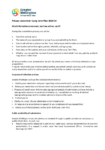
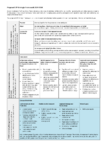

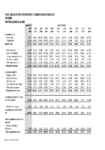
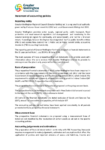
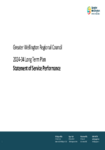

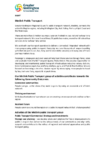
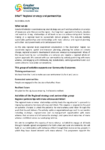
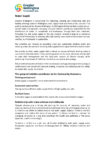
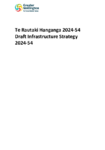
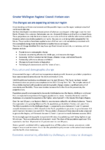



 Business excl.gst
Business excl.gst
 Residential incl.gst
Residential incl.gst Business excl.gst
Business excl.gst Rural excl.gst
Rural excl.gst